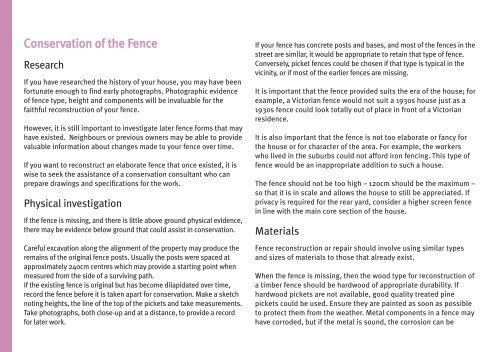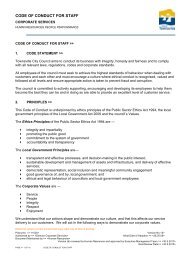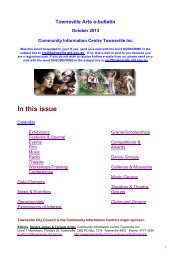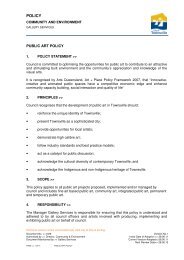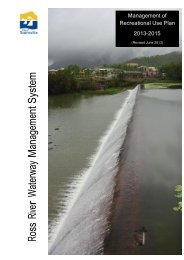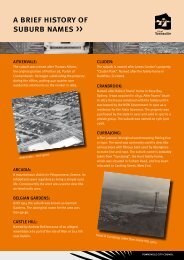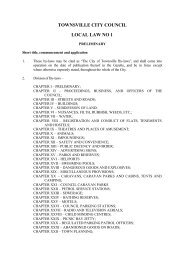Heritage and Character Housing - Townsville City Council
Heritage and Character Housing - Townsville City Council
Heritage and Character Housing - Townsville City Council
- No tags were found...
You also want an ePaper? Increase the reach of your titles
YUMPU automatically turns print PDFs into web optimized ePapers that Google loves.
Conservation of the FenceResearchIf you have researched the history of your house, you may have beenfortunate enough to find early photographs. Photographic evidenceof fence type, height <strong>and</strong> components will be invaluable for thefaithful reconstruction of your fence.However, it is still important to investigate later fence forms that mayhave existed. Neighbours or previous owners may be able to providevaluable information about changes made to your fence over time.If you want to reconstruct an elaborate fence that once existed, it iswise to seek the assistance of a conservation consultant who canprepare drawings <strong>and</strong> specifications for the work.Physical investigationIf the fence is missing, <strong>and</strong> there is little above ground physical evidence,there may be evidence below ground that could assist in conservation.Careful excavation along the alignment of the property may produce theremains of the original fence posts. Usually the posts were spaced atapproximately 240cm centres which may provide a starting point whenmeasured from the side of a surviving path.If the existing fence is original but has become dilapidated over time,record the fence before it is taken apart for conservation. Make a sketchnoting heights, the line of the top of the pickets <strong>and</strong> take measurements.Take photographs, both close-up <strong>and</strong> at a distance, to provide a recordfor later work.If your fence has concrete posts <strong>and</strong> bases, <strong>and</strong> most of the fences in thestreet are similar, it would be appropriate to retain that type of fence.Conversely, picket fences could be chosen if that type is typical in thevicinity, or if most of the earlier fences are missing.It is important that the fence provided suits the era of the house; forexample, a Victorian fence would not suit a 1930s house just as a1930s fence could look totally out of place in front of a Victorianresidence.It is also important that the fence is not too elaborate or fancy forthe house or for character of the area. For example, the workerswho lived in the suburbs could not afford iron fencing. This type offence would be an inappropriate addition to such a house.The fence should not be too high – 120cm should be the maximum –so that it is in scale <strong>and</strong> allows the house to still be appreciated. Ifprivacy is required for the rear yard, consider a higher screen fencein line with the main core section of the house.MaterialsFence reconstruction or repair should involve using similar types<strong>and</strong> sizes of materials to those that already exist.When the fence is missing, then the wood type for reconstruction ofa timber fence should be hardwood of appropriate durability. Ifhardwood pickets are not available, good quality treated pinepickets could be used. Ensure they are painted as soon as possibleto protect them from the weather. Metal components in a fence mayhave corroded, but if the metal is sound, the corrosion can be


